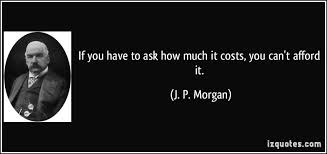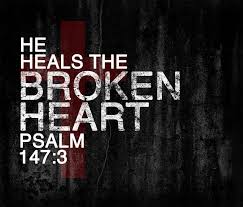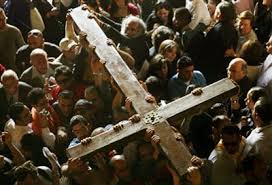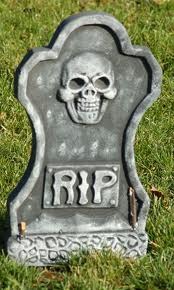 10 Ways The Church Might Change: Point 7
10 Ways The Church Might Change: Point 7
[In a previous blog I have outlined 10 possible changes the Church may face in the future. This is point 7 in the series: “Laying Down One’s Life”, vertically in our relationship to God and horizontally in our relationship with each other, is central to the gospel. On the Cross, Jesus “laid down his life” for us! On the Cross, we must “lay down our life” for God and for each other. Without understanding this principle, we cannot function in plurality, nor as a priesthood, nor as an unified body.”]
I explained in a previous blog, point #2, about the importance of the vertical plane between God and man and the horizontal plan between man and his fellow man that dissect each other making up the context of the Cross. Also in my last blog I addressed the issue of the body of Christ, the Priesthood of Believers, the Church, as a pluralistic body of diversity, yet a single entity as one. The question that needs to be asked is, “How can such a diverse body be united and remain united? The answer lies in putting the two blogs together.
In order for the Church to be united it has to embrace the doctrine of Priesthood of Believers, that in spite of its extreme diversity, common, everyday believers are the backbone of the Church, and it is they who have to step forward and perform the duties that are necessary for the Priesthood of Jesus Christ to succeed as one united distinct unit. The Church’s diversity in the past is the very thing that has torn it asunder when what makes them different is the very thing they stood up for bringing division. Then what can keep the Church united; what will be the glue? As I have suggested earlier, the answer likes in I John 3:16 where we, as believers in Jesus Christ, are to “lay down our lives for the brethren”.
 My first reaction is that “attitude” can never be attained, for there is no historical proof. Historically, the opposite, division, has always resulted, so why would I believe in the impossible. I know scripturally it says, “all things are possible in Christ Jesus who strengthens me,” but this dimension goes beyond the vertical relationships between God and man through Christ Jesus, it goes between man and man. As man, Adam, a creation of God, are we willing to consciously make the decision ourselves to be “selfless”? Can we willing lay down our life for the common good of the unit, the Body of Christ?
My first reaction is that “attitude” can never be attained, for there is no historical proof. Historically, the opposite, division, has always resulted, so why would I believe in the impossible. I know scripturally it says, “all things are possible in Christ Jesus who strengthens me,” but this dimension goes beyond the vertical relationships between God and man through Christ Jesus, it goes between man and man. As man, Adam, a creation of God, are we willing to consciously make the decision ourselves to be “selfless”? Can we willing lay down our life for the common good of the unit, the Body of Christ?
Jesus, as a man, as flesh and blood, as the Son of God, came to earth to be obedient for the cause of laying down his own life, willingly, for the brethren. He proved that such a deed can be done only through “Christ Jesus who strengthens me”, but just as Jesus experienced on the Cross, it could be extremely painful. Being Christ-like means one has to be utterly “selfless”; it is not about me, but about the kingdom of God.
So what does it mean to be selfless, to lay down your life?
Jesus, when on the Cross, never played the “blame game”? The Church has debated over the centuries, “who is to blame for Jesus’ crucifixion?” Some blame the Romans and Pilot washing his hands clean of a case for political gains of an innocent man being accused by a ruthless mob. Some have blamed the Jews, the Sanhedrin, or Jewish governing body, for Jesus’ crucifixion. The great reformer, Martin Luther held this anti-semantic view during his life which became the seeds for the Spanish Inquisition and the Holocaust later in history. Some blame it on the sins of you and me, a favorite theme of modern day Evangelical evangelists. Jesus did not blame the Romans, nor his fellow Jew, nor you or me, for while on the Cross his attitude came out in His own words, “Father, forgive them, for they know not what they do.” His crucifixion was preordained by God, the Father, himself; even prophesied by prophets of old. It was going to happen because it was part of God’s eternal plan. There IS NO BLAME! Even blameless, selflessness is being willing to take the blame even though it is unjustified; that is what Jesus did! As the Sacrificial Lamb, he took the blame even though he was innocent, willingly, selflessly, for the good of mankind!
 “Laying down your life for your brethren” must begin with laying down and crucifying one’s “blame game”. It doesn’t matter who is right or wrong. What matter’s is God’s will, God’s eternal plan, and if that plan is to lay down the blame, carrying the unjustified burden and accusations even thought you may be right, even at the expense of one’s reputation and life, then do so! That is being “Christ-like”! It was never God’s plan for the Priesthood of Believers to be blaming and condemning one another for their faults, sins, and short comings; It was God’s plan to extend GRACE to cover his/her faults, sins, and short comings. The Church preaches grace; now it is being called to LIVE GRACE TOWARD ONE ANOTHER! Impossible, you may first shout, but again “all things are possible in Christ Jesus who strengthens you!”
“Laying down your life for your brethren” must begin with laying down and crucifying one’s “blame game”. It doesn’t matter who is right or wrong. What matter’s is God’s will, God’s eternal plan, and if that plan is to lay down the blame, carrying the unjustified burden and accusations even thought you may be right, even at the expense of one’s reputation and life, then do so! That is being “Christ-like”! It was never God’s plan for the Priesthood of Believers to be blaming and condemning one another for their faults, sins, and short comings; It was God’s plan to extend GRACE to cover his/her faults, sins, and short comings. The Church preaches grace; now it is being called to LIVE GRACE TOWARD ONE ANOTHER! Impossible, you may first shout, but again “all things are possible in Christ Jesus who strengthens you!”
 Church, brethren, the Body and Bride of Christ, the Priesthood of Believers, let’s begin to “lay down our lives to/for one another”, “selflessly”, “without blame” while extending “grace”; for then we will see the miracle of the fulfillment of the unity of the Body of Christ for which Jesus prayed in John 16. No prayer goes unanswered, and neither will this one, particularly if Jesus himself prayed it and fulfilled the answer to that prayer! At the cross, being willing to “lay down one’s life”, blamelessly, selflessly is where REVIVAL begins. Church, let’s let the REVIVAL begin there with ME!
Church, brethren, the Body and Bride of Christ, the Priesthood of Believers, let’s begin to “lay down our lives to/for one another”, “selflessly”, “without blame” while extending “grace”; for then we will see the miracle of the fulfillment of the unity of the Body of Christ for which Jesus prayed in John 16. No prayer goes unanswered, and neither will this one, particularly if Jesus himself prayed it and fulfilled the answer to that prayer! At the cross, being willing to “lay down one’s life”, blamelessly, selflessly is where REVIVAL begins. Church, let’s let the REVIVAL begin there with ME!
Why Should/Shouldn’t My Church Embrace Change? Part XXIV























































